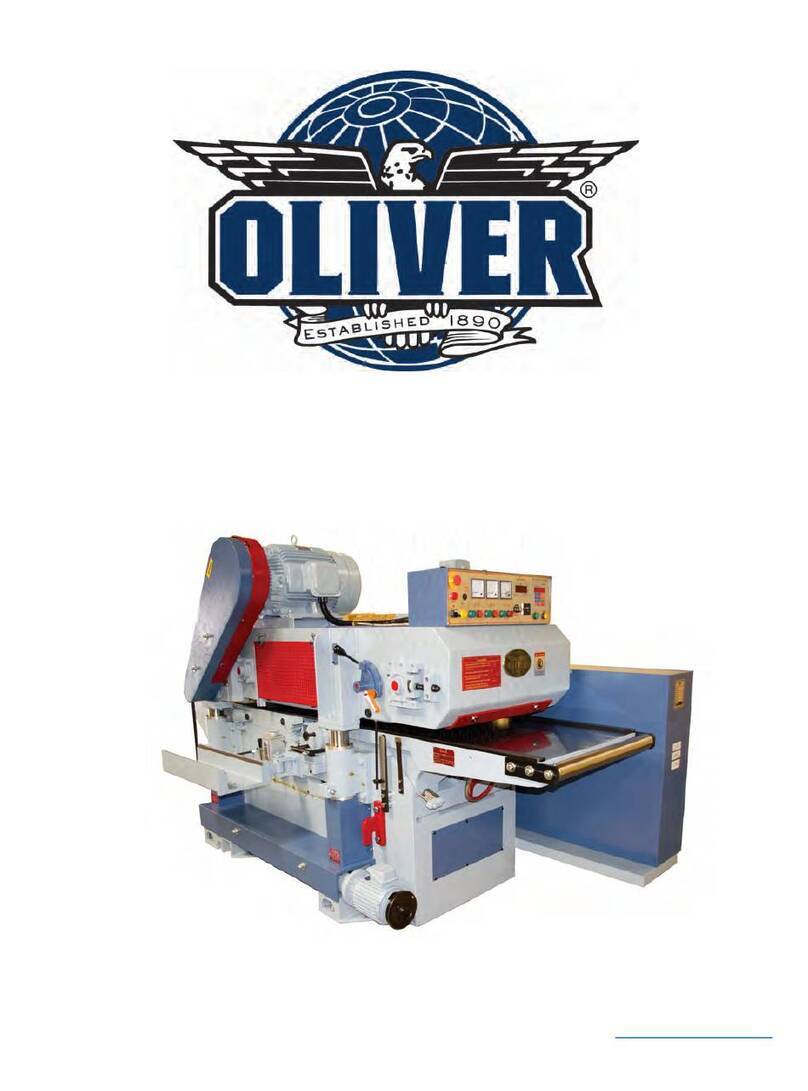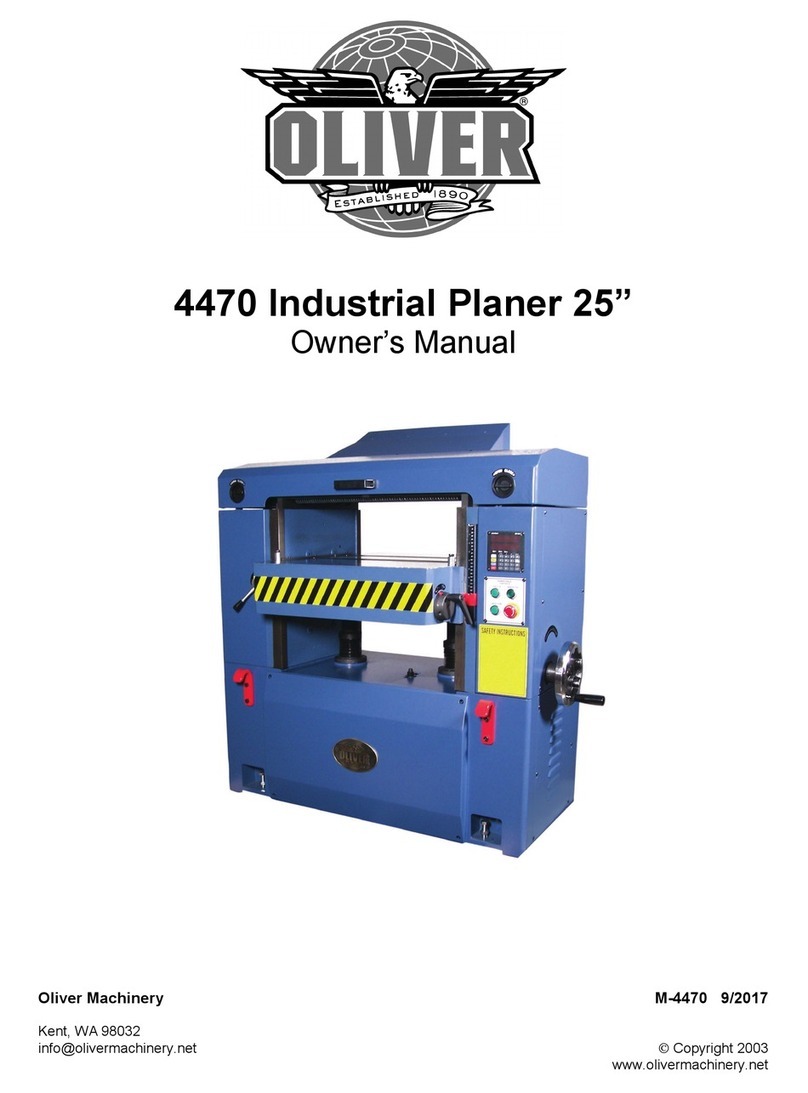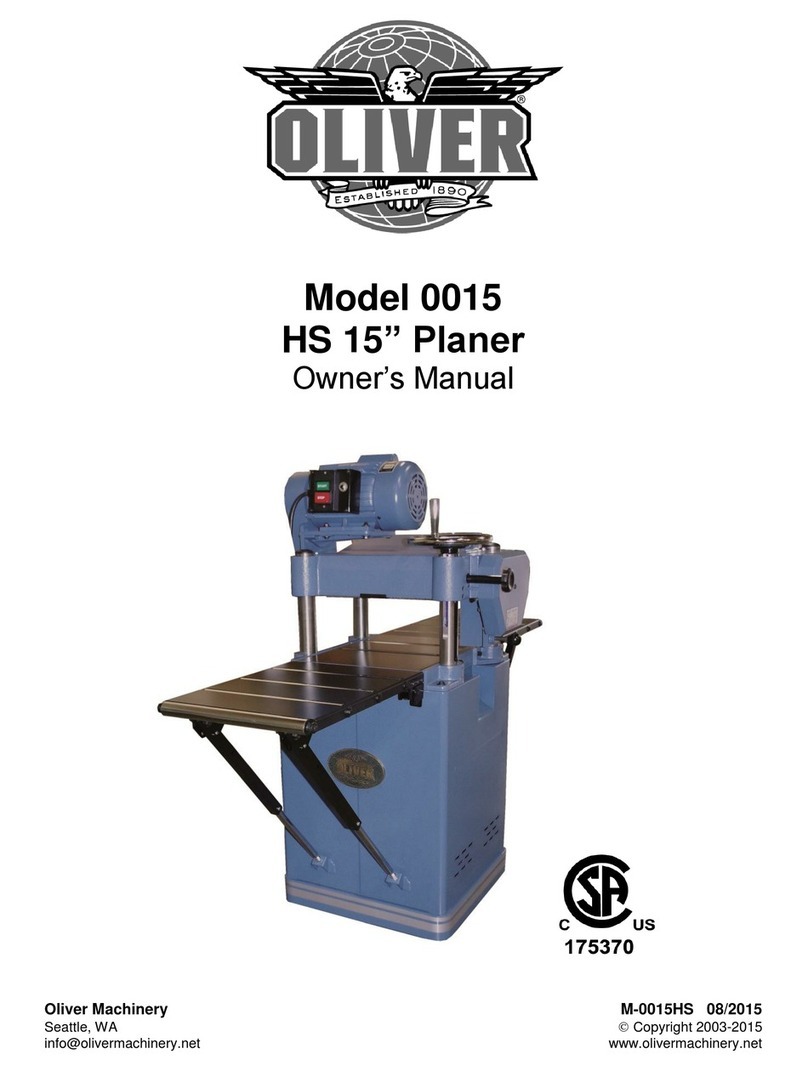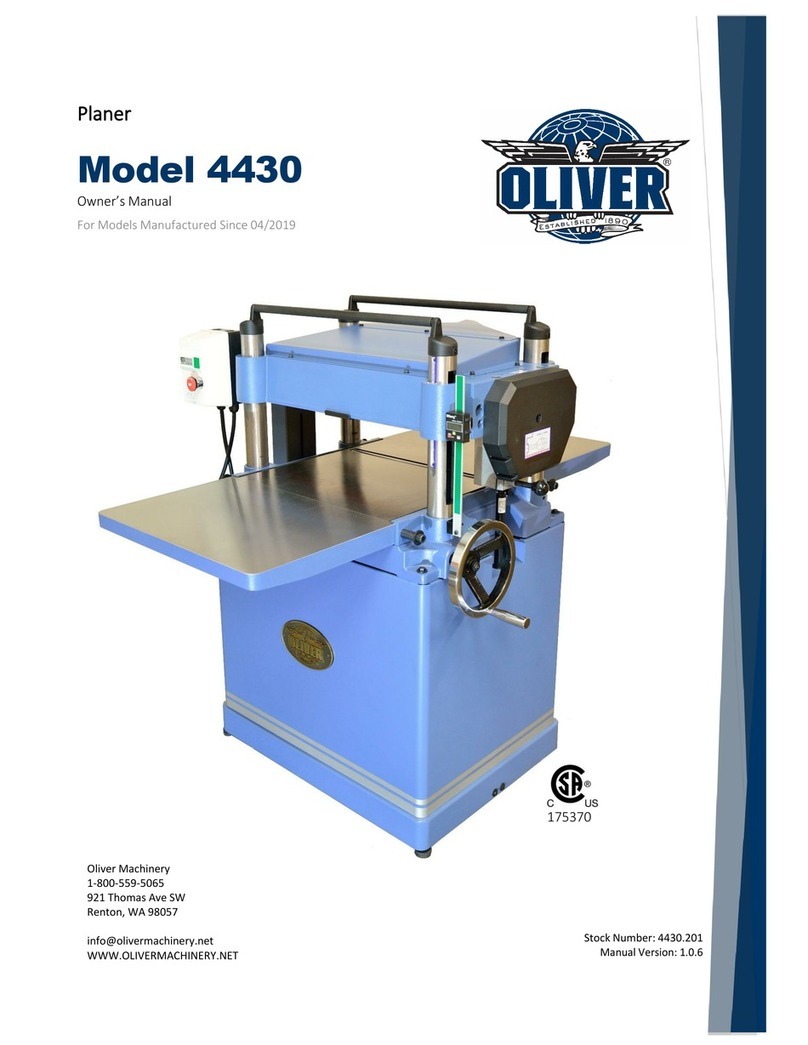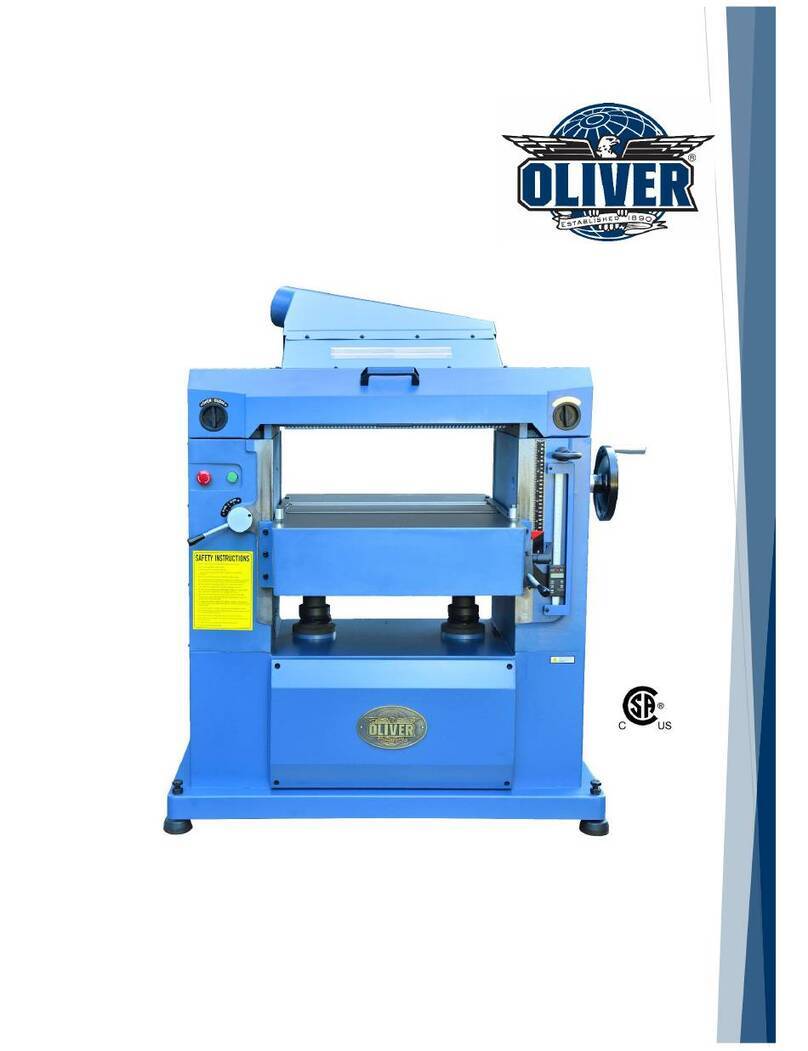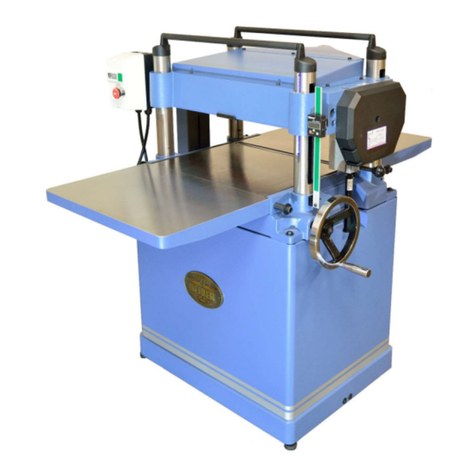
4
Oliver 5240 Owner’s Manual
Safety
1. SAFETY
ead this manual completely and observe all warning labels on the machine. Oliver Machinery has made every attempt to
provide a safe, reliable, easy-to-use piece of machinery. Safety, however, is ultimately the responsibility of the individual
machine operator. As with any piece of machinery, the operator must exercise caution, patience, and common sense to
safely run the machine. Before operating this product, become familiar with the safety rules in the following sections.
Feel free to contact your local dealer with any safety concerns.
1.1 General Woodworking Safety Rules
1. ead the owner’s manual completely before operating the machine.
2. Observe the warning labels on the machine.
3. Use the machine for its intended purpose only.
4. Obtain training before operating the machine.
5. Do not operate this machine while under the influence of drugs, alcohol or medication.
6. Make certain the machine is electrically grounded and that all electrical connections are secure.
7. Wear eye protection and hearing protection when operating this machine.
8. Keep the floor and area around the machine free of sawdust, oil, scrap materials, rags or other items to minimize the
risk of slippage and/or injury.
9. Make certain the area around the machine is well lighted.
10. Utilize guards and other safety features whenever possible. Keep all guards and safety features in good working order.
11. Do not wear loose clothing, neckties, rings, watches, bracelets or other items that could become caught in the ma-
chine. Keep long hair contained, and keep shirtsleeves above the elbow.
12. Attach adequate dust collection to the machine, and wear dust protection masks when appropriate.
13. Never leave the machine running unattended. Always wait until the machine has come to a complete stop before
leaving it.
14. emove all wrenches and adjustment tools prior to starting the machine.
15. Disconnect the machine from power before making any adjustments.
16. Use extension tables or a helper when working with large pieces.
1.2 Specific Woodworking Safety Rules for
Double Side Jointing laners
1. Make certain that the knives are sharp, rust free and in good working order.
2. Always feed stock from the infeed side to the outfeed side. Never feed stock backwards through the machine.
3. Never place your hands under the workpiece. They could become trapped between the table and the workpiece.
4. Do not try to remove a workpiece after the machine has started to feed. Instead, turn off the machine, raise the
carriage and then remove the piece.
5. Do not feed stacked material.
6. Turn the machine off before clearing chips and shavings.
7. Do not feed wood that contains loose knots, nails, staples or other foreign materials.
